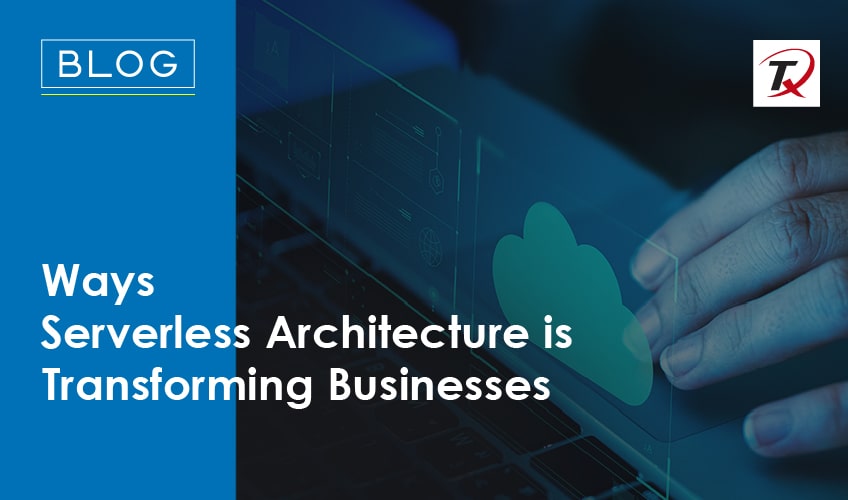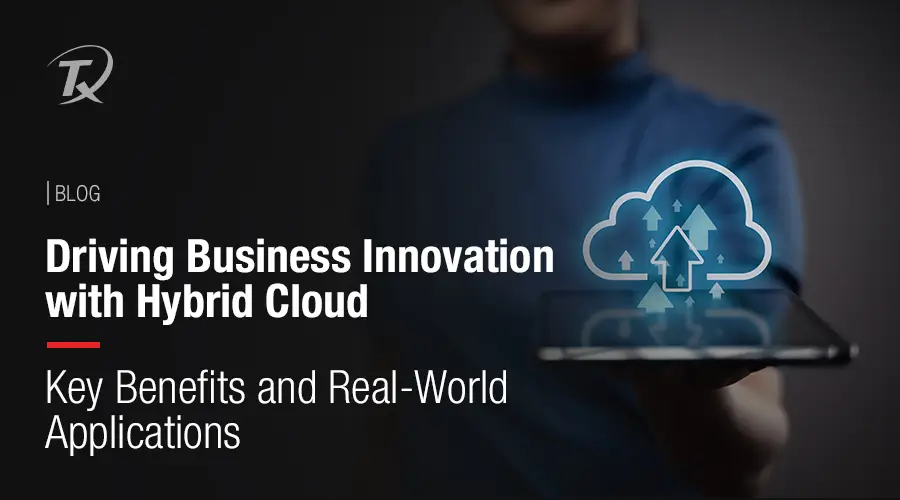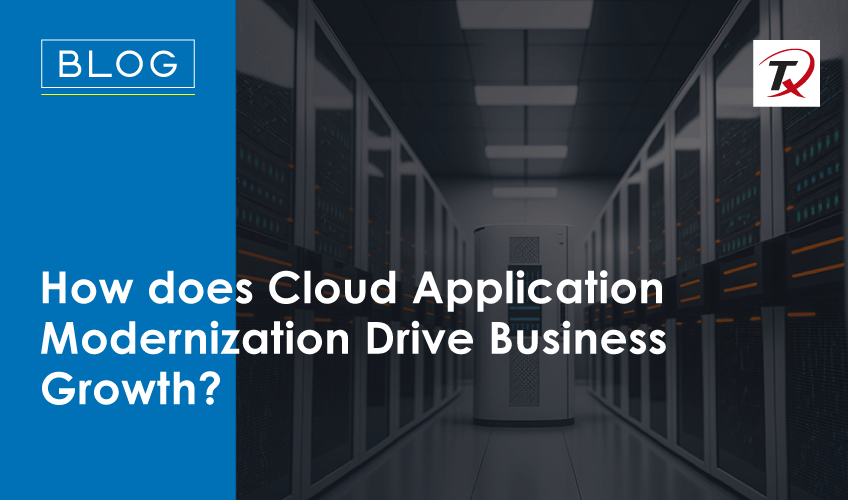
- Serverless Architecture Overview
- FaaS Vs BaaS Vs PaaS Vs IaaS
- 5 Business Benefits of Serverless Architecture
- Top 5 Use Cases of Serverless Architecture
- How can Tx Help in Securing Your Serverless Architecture?
- Summary
Traditional software architecture models have become unsuitable for meeting dynamic market demands in today’s rapidly evolving business landscape. As agility and cost management become crucial factors in deciding market success, businesses should adopt technologies to support rapid development while keeping overhead in check. One solution for this is serverless architecture. This transformative technology is reshaping the way businesses operate in 2024. Even cloud providers are focusing on serverless architecture for businesses across different industries. By 2025, the global serverless architecture market will reach approximately $21.99 billion.
It eliminates the need to manage or operate physical servers or virtual machines, reducing IT overhead and costs. According to a survey, over 50% of organizations using cloud technologies have integrated serverless infrastructure to handle their operations. But what’s the significance of this shift for businesses? Is it going to unlock new levels of innovation and efficiency? Well, we will discuss all these factors in this blog today.
Serverless Architecture Overview
Serverless architecture is a cloud computing model in which businesses build and run apps without managing the physical infrastructure. Cloud service providers automatically provision, scale, and manage physical hardware, OS, and virtual machines. This allows businesses to focus on creating code suitable for their applications. There are four types of serverless models.

Function as a Service (FaaS)
The cloud provider manages all aspects of the server environment and scales the resources automatically. Examples include AWS Lambda, Google Cloud Functions, and Azure Functions.
Backend as a Service (BaaS)
This model is useful for web and mobile app developers who want to quickly implement backend services without worrying about underlying servers.
Platform as a Service (PaaS)
This model allows users to develop, run, and manage applications without building and maintaining the infrastructure associated with developing and launching the app.
Infrastructure as a Service (IaaS)
This model is related to abstracting hardware into virtual machines. Users can manage OS, storage, and deployable apps without touching physical hardware.
Key Characteristics of Serverless Architecture
• Serverless apps respond to events to ensure resources are used, when necessary, thus improving efficiency.
• Serverless platforms can scale automatically, from handling a few requests to thousands without human involvement.
• Usage cost depends on the actual utilization to the function execution level, thus reducing expenses.
• Failover and redundancy are built into serverless functionalities to ensure high availability during disaster recovery.
FaaS Vs BaaS Vs PaaS Vs IaaS

| Service Models | Description | Primary Use Cases | Benefits |
| FaaS | It focuses on running specific functions on demand and managed by the cloud provider. | Event-driven apps, microservices. | Upscale automatically, pay for what businesses use and reduce operational management. |
| BaaS | Provides mobile and web app developers with a mechanism to link apps to backend cloud storage and APIs. | Mobile and web apps needing backend services like databases and user management. | Speeds up development by offering pre-built backend services and simplifies backend code. |
| PaaS | Involves offering software and hardware tools needed for app development over the internet. | App development, testing, and deployment. | Simplifies development, provides built-in tools and services, and manages infrastructure. |
| IaaS | Provides virtualized computing resources via the internet. | Hosting websites, data storage, and VMs for development | Offers control over resources, flexible and scalable, pay-as-you-go pricing model. |
5 Business Benefits of Serverless Architecture
Serverless architecture is transforming software development, offering companies a way to upscale efficiency and facilitate innovation. Eliminating the need to manage servers enables businesses to focus on developing backend code and serverless apps without worrying about managing complex server hardware. Let’s take a looklook at five key business benefits of implementing serverless architecture in 2024:

Hosting and Computing
Businesses with their own data centers or servers must keep their servers operational. Just imagine the size of the data centers, the resources needed to operate them, and the energy needed to keep them running. Serverless architecture allows businesses to purchase servers on demand. It lowers the cost of resources and maintains diverse businesses by keeping them operational.
Faster Development
Serverless platforms improve the speed and reliability of the development process. Businesses can help teams focus on writing business logic instead of wasting time on infrastructure setup. Service models based on serverless architecture offer out-of-the-box backend code solutions to speed up the development and deployment of web apps.
Improved Time-to-Market
The serverless platform speeds up the deployment of new apps and services. By streamlining infrastructure setup and development processes, businesses can bring their products to market much faster. It allows businesses to maintain a competitive advantage in fast-paced industries.
Improved Scalability
Businesses should assess whether their servers can handle huge data. Implementing serverless architecture would allow them to adapt to changing scenarios easily. If the software or app succeeds and its popularity increases, serverless architecture only requires stage adjustments to suit the expansion. Businesses do not have to build infrastructure without determining whether they need it.
Operational Agility
Serverless computing offers flexibility, allowing businesses to respond more swiftly to market changes and customer needs. Outsourcing infrastructure management to the cloud provider allows businesses to adapt and upscale their apps and services without dealing with the traditional IT setup nightmares.
Top 5 Use Cases of Serverless Architecture

Serverless architecture is a versatile tool that transforms various aspects of business operations. As they focus on agility and cost-efficiency, businesses need to understand the practical applications of serverless technology. Let’s take a looklook at certain use cases that show how serverless architecture supports different scenarios while simplifying complexity.
Media Processing
It allows businesses to build multimedia services with improved performance. They can utilize it to transcode video or resize images for multiple devices. Users can easily upload files, and businesses can execute suitable processes to support the upload process. They can also implement image processing in a serverless architecture. Businesses can implement image recognition if the app takes images as input for document verification, search by image, or in payment QR code methods.
Chatbots
Businesses can implement chatbots to answer user queries, such as common FAQs, order status, etc. The serverless architecture will work on a pay-as-you-go pricing model, so businesses will only pay for the resources that they utilize. Chatbots help improve customer engagement with value-driven instant support. Businesses can automate dozens of chatbot tasks by going serverless; for example, if a user wants to know his/her account status, a chatbot can show it and email or message the user if needed.
Web Applications
Serverless architecture is a suitable tool for hosting web apps with fluctuating traffic. It facilitates seamless scaling during high-traffic hours without requiring manual scaling. This will ensure consistency in user experience without incurring unnecessary costs during off-peak times.
API Backends
Businesses can simplify API development and deployment by integrating serverless architecture. By handling IT infrastructure automatically, businesses can focus on developing robust APIs that are scalable, easy to build, and maintain efficient backends for their applications.
Data Processing Pipelines
Serverless platforms manage data transformation and movement across systems in data analytics without needing constant server upkeep. This is useful for businesses, as they must aggregate and analyze data from various sources in real-time.
How can Tx Help in Securing Your Serverless Architecture?

Serverless architecture offers various benefits regarding cost-efficiency and scalability to facilitate digital transformation in an organization. However, it has its own security challenges that businesses cannot address using traditional IT security measures. As one of the leading digital engineering and quality assurance companies, Tx ensures the security of your serverless applications by protecting your and your client’s data. Our testing approach focuses on specific characteristics of serverless computing.
• We implement comprehensive testing protocols specifically designed for serverless applications. This includes SAST to analyze code at rest, DAST for testing in runtime, and pen testing to identify vulnerabilities that attackers might exploit.
• We ensure strict identity and access management policies are in place to control access to serverless resources and determine what actions must be performed, thus minimizing the risk of unauthorized access.
• Our QA experts use tools to continuously monitor and update external libraries and dependencies to protect against security risks.
• We secure your APIs by rigorously testing API gateways that manage authentication, rate limiting, and other security policies. It prevents unauthorized access and DOS attacks.
• Our pool of highly certified security professionals, with expertise in CISM, CISSP, CISA, CAP, and CEH, focuses on compliance with data protection regulations and international standards, including OWASP, OSSTMM, PCI-DSS, HIPAA, SOX, etc.
• We implement automation tools to monitor serverless applications in real-time for unusual activities or potential breaches, facilitating rapid response to threats.
• Our regular audits can ensure that your serverless applications meet industry-specific security standards and regulations. They also identify and rectify any compliance issues before they cause security breaches.
Summary
Serverless architecture is transforming business operations in 2024 by providing a scalable, cost-effective solution that eliminates the need for managing physical servers and infrastructure. This technology allows businesses to focus more on innovation and application development, offering a range of serverless models like FaaS, BaaS, PaaS, and IaaS. Each model serves different business needs but collectively promotes efficiency and agility. However, securing serverless systems presents unique challenges, which are addressed through rigorous testing and security practices by partnering with QA experts like Tx to ensure robust protection and compliance.
Contact our QA experts now to learn how we can help secure your serverless applications.
Discover more
Get in Touch
Stay Updated
Subscribe for more info




